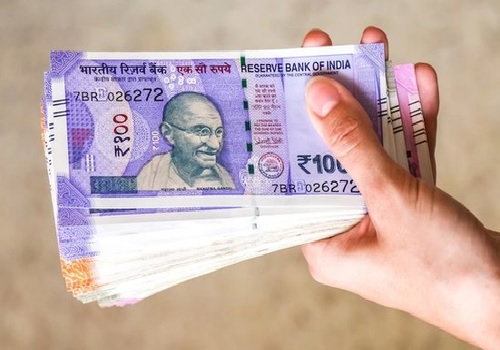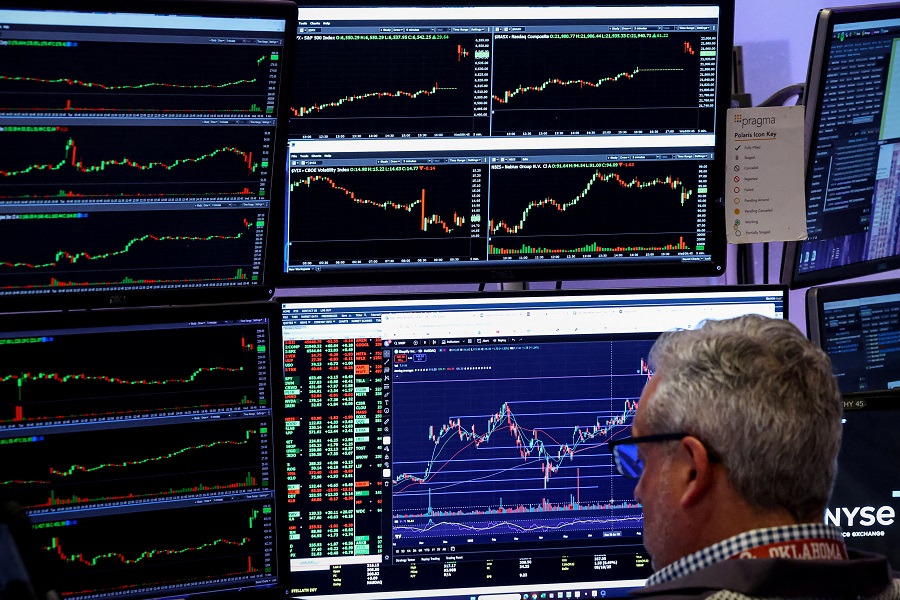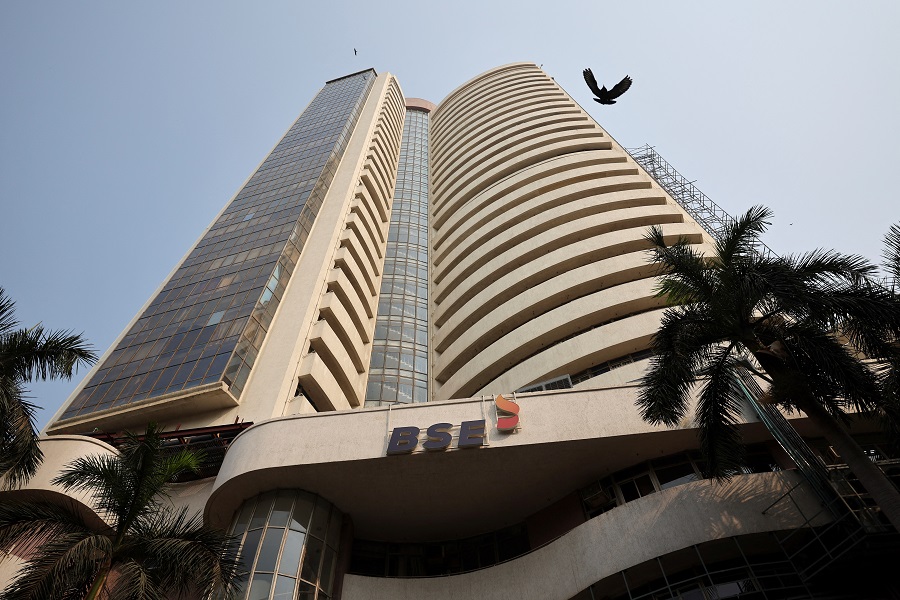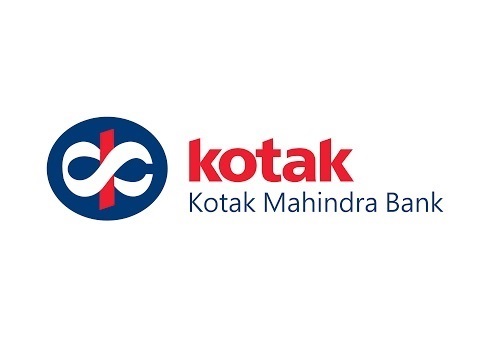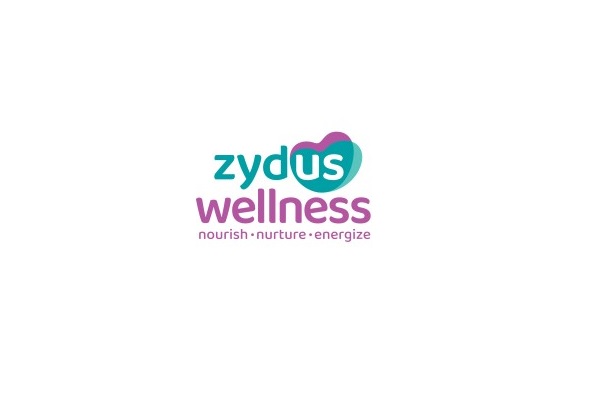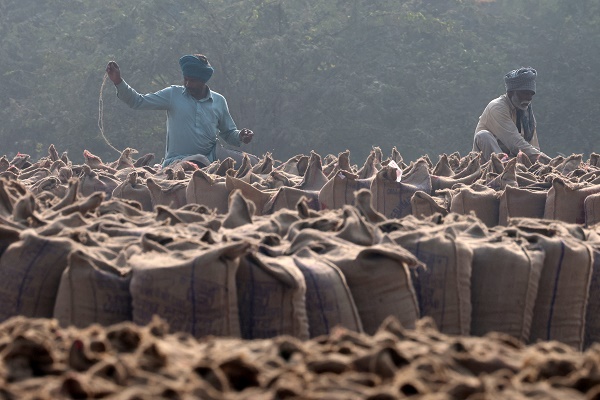Sagility India coming with IPO to raise upto Rs 2,107 crore

Sagility India
- Sagility India is coming out with a 100% book building; initial public offering (IPO) of 70,21,99,262 shares of Rs 10 each in a price band Rs 28-30 per equity share.
- Not more than 75% of the issue will be allocated to Qualified Institutional Buyers (QIBs), including 5% to the mutual funds. Further, not less than 15% of the issue will be available for the non-institutional bidders and the remaining 10% for the retail investors.
- The issue will open for subscription on November 5, 2024 and will close on November 7, 2024.
- The shares will be listed on BSE as well as NSE.
- The face value of the share is Rs 10 and is priced 2.80 times of its face value on the lower side and 3.00 times on the higher side.
- Book running lead managers to the issue are ICICI Securities, IIFL Securities, Jefferies India and J.P. Morgan India.
- Compliance Officer for the issue is Satishkumar Sakharayapattana Seetharamaiah.
Profile of the company
Sagility India provides technology-enabled business solutions and services to clients in the U.S. healthcare industry. It is a pure-play healthcare focused services provider, and its clients include Payers (U.S. health insurance companies, which finance and reimburse the cost of health services) and Providers (primarily hospitals, physicians, and diagnostic and medical devices companies). The company’s services to Payers cater to various aspects of their operations including (i) core benefits administration functions such as claims management, enrolment, benefits plan building, premium billing, credentialing, and provider data management and (ii) clinical functions such as utilization management, care management, and population health management. Its services to Providers include revenue cycle management functions such as financial clearance, medical coding, billing, and accounts receivable follow-up services.
Additionally, it provides some of the services that it provides to Payers to pharmacy benefit managers (PBMs) that manage prescription drugs for Members (i.e., insured persons) under health insurance plans. It delivers these services leveraging its tools and platforms, as needed, through its capable talent pool from its five global service delivery locations in India, the Philippines, the U.S., Jamaica and Colombia.
It has been recognized for the quality and scale of its services by industry specialists. It is ranked as a Leader by Avasant in their Clinical Services Business Process Transformation RadarView report 2023 and as a Leader in Everest’s Healthcare Payer Operations PEAK Matrix Assessment 2023. Its Predecessor Company commenced providing services to Payer clients in 2000 and gradually increased the scope of services provided to Payers and Providers, and the number of its clients, through organic and inorganic growth. The company was incorporated on July 28, 2021 and it acquired the healthcare services business of its Predecessor Company on January 6, 2022. Subsequently, the Company acquired the Subsidiaries in March 2024. All of its clients are located in the U.S. As of June 30, 2024, its five largest client groups (i.e., client entities together with their affiliates) had an average tenure of 17 years with the Business. As of January 2024, it served five of the top 10 Payers by enrolment in the U.S.
Proceed is being used for:
- Achieving the benefits of listing the Equity Shares on the Stock Exchanges
- Carrying out the Offer for Sale of up to 702,199,262 Equity Shares of the face value of Rs 10 each by the Promoter Selling Shareholder
Industry Overview
Healthcare is an intricate segment of the US economy accounting for 17.1% of its nominal GDP and amounting to $4.7 trillion Rs 389.6 trillion) in 2023 as per the latest projections by Centers for Medicare & Medicaid Services (CMS). This expenditure has grown at a CAGR of 5.0% from 2014 to 2023. Notably, the healthcare expenditure surged to 19.4% of the nominal GDP in 2020 during COVID-19, totaling $4.1 trillion (Rs 346.0 trillion). According to the Organization for Economic Cooperation and Development (OECD), the per capita healthcare expenditure at current prices (Purchasing Power Parity converted) in the US amounted to $12,555.3 (Rs 10,48,345.0) in 2022, establishing it as the highest spender on healthcare among leading economies. As per the analysis of OECD data, this expenditure amount is significantly more than Switzerland, the second-highest spender, standing at $8,049.1 (Rs 672,085.4) in 2022. Comparatively, the Indian healthcare market is underdeveloped with the latest estimates from World Health Organization (WHO) showing that the health spending per capita is $74.0 (Rs 6,178.9) in 2021.
The healthcare operations spend in the US has grown at a CAGR of approximately 3.2% from 2014 to 2023 and was valued at approximately $201.1 billion (Rs 16.8 trillion) in 2023. This spend is expected to grow at a CAGR of around 5.2% to reach approximately $258.9 billion (Rs 21.6 trillion) in 2028, driven by the rise in aging population, increasing prevalence of chronic diseases, and various governmental initiatives aimed at enhancing healthcare services, among other factors. The healthcare payers are estimated to contribute around 68.7% or approximately $138.2 billion (Rs 11.5 trillion) to the overall operations spend of $201.1 billion (Rs 16.8 trillion) in 2023. The healthcare provider market had a comparatively smaller contribution of approximately 31.3% or $62.9 billion (Rs 5.2 trillion) in 2023.
The total outsourced operations spend in the US healthcare market grew at a CAGR of 6.1% from CY 2014 to CY 2023. As a result, in 2023, the aggregate outsourcing penetration rate in the US healthcare operations market stood at 21.5-23.5%, resulting in a total outsourced operations spend of approximately US$ 45.0 billion (Rs 3.8 trillion). The healthcare payer market had a relatively higher outsourcing penetration at 22.0-24.0%, while the healthcare provider market had a relatively lower outsourcing penetration at 19.5-21.5% in 2023. Further, the growth in the outsourced operations market is expected to outpace the growth in the insourced market. While the overall healthcare outsourced operations market is expected to grow at a CAGR of approximately 8.7%, the payer outsourced market is forecasted to grow at a CAGR of approximately 7.0% from 2023-28. The provider operations outsourced market, on the other hand, is expected to grow at a CAGR of around 12.5%.
Pros and strengths
Leader in the large and resilient U.S. Payer and provider solutions market: With per capita healthcare expenditure amounting to $12,555.3 in 2022, the U.S. economy was the highest spender on healthcare among leading economies. Healthcare operations expenditure (i.e., expenditure on front and back-office functions to support Payers and Providers) was valued at $201.1 billion in 2023 and is expected to reach approximately $258.9 billion in 2028. Growth in the U.S. healthcare market is expected to be driven by a number of factors, including a rise in aging population and increasing prevalence of chronic diseases. While the healthcare market is expected to benefit from these tailwinds, challenges faced by the healthcare market are expected to drive outsourcing growth. These factors include continued staffing shortages propelling an increased demand for third-party support and regulatory changes.
Domain expertise in healthcare operations, with end-to-end service offerings to Payers and Providers: The company provides technology-enabled services to Payer and Provider clients. This pure-play nature of its business, together with over 24 years of the Business’ experience and the effective use of technology, has helped it to build domain expertise in its operations. The company provides end-to-end, comprehensive service offerings to Payer clients. Its tech-enabled healthcare services focussed across end-to-end front and back-office healthcare services sets it apart among business services firms, technology transformation firms, and back-office service providers.
Suite of scalable, technology-enabled services and solutions, supported by proprietary tools and platforms: Over the years, the company has developed a suite of proprietary tools and platforms that enable its services. These proprietary tools and platforms assist in serving the entire spectrum of its Payer clients’ operations and its healthcare Provider clients’ revenue cycle management functions. It leverages various technologies including RPA, analytics and AI. The technology team supporting these technology products and solutions spans product development, client delivery, process optimization, technology consulting and client engagement functions. Its products and technologies are guided by the domain expertise of its practice leaders to make them relevant to the healthcare industry.
Multi-shore, scalable and flexible delivery model with certified data protection and service standards: The company has a multi-shore service delivery model, whereby it provides its services from 31 locations in five countries (U.S., Colombia, Jamaica, India and the Philippines). As of June 30, 2024, it had 35,858 employees servicing Members across the U.S. In Financial Year 2024, it helped Payers process 105 million claims and handle over 75 million Member and Provider interactions. It determines the location of service delivery in consultation with its clients, depending upon their requirements. It follows a flexible work from home model with many of its employees working from home.
Risks and concerns
Significant revenue comes from certain large client groups in the U.S: The company has in the past derived a significant portion of its revenue from certain large clients’ groups (i.e., client entities together with their affiliates). The company has garnered 91.41%, 90.68% and 91.95% of Revenues from 10 largest client groups in FY24, FY23 and FY22, respectively. Any downsizing of the scale of its key clients’ business or any deterioration of their financial conditions or prospects or any renegotiation of its contractual agreements may result in a reduction in their expenditure on the services it provides. The company cannot assure that its ten largest clients will not terminate any other SOWs with it in the future, which may adversely affect its business, profits, financial condition and results of operations.
Business is solely focused on the U.S. healthcare industry: All of its revenues are earned from clients operating in the U.S. healthcare industry. Healthcare accounted for 17.1% of the U.S.’s nominal GDP and amounting to $4.7 trillion (Rs 389.6 trillion) in 2023. This expenditure has grown at a CAGR of 5.0% from 2014 to 2023. Healthcare expenditure surged to 19.4% of the nominal GDP in 2020 during COVID-19, totaling $4.1 trillion (Rs 346.0 trillion). Furthermore, this expenditure is anticipated to grow at a CAGR of 5.5%, reaching $6.1 trillion (Rs 509.8 trillion based on an exchange rate of $1 to Rs 83.49) by 2028. The demand for its services and, in turn, its revenues, depend on, among other things, the pace of growth of the U.S. healthcare industry and trends in the U.S. healthcare industry, including outsourcing trends relating to the services that it provides. Accordingly, economic factors and industry trends that affect Payers and Providers affect its business.
Business is subject to seasonality: The company’s business is subject to seasonal fluctuations. It typically sees higher demand for its services during the open enrollment period during November and December of each year, when members register for health insurance plans, and modify or cancel existing plans. Accordingly, it typically sees higher revenues for the quarters ending December 31 and March 31. As a result of these fluctuations, comparisons of operating results between different periods within a single financial year, or between different periods in different years, are not necessarily meaningful and should not be relied upon as an indicator of its performance.
Clients are permitted to terminate agreement: The company’s clients are permitted to terminate their MSAs with it for a variety of reasons including : (i) a material breach of an MSA which is not cured; (ii) if its services are found to be unacceptable, unsatisfactory or inadequate in quality as a result of its failure to meet any written requirements; (iii) if its licenses, permits or authorizations are suspended such that its ability to deliver services is adversely affected; (iv) if the company or its affiliates are convicted of any criminal charge in any jurisdiction where it delivers services; or (v) if it is debarred from participation in any government funded healthcare programs. Additionally, in the event of termination, it may not be able to recover fees for any services rendered prior to termination. Even if the company is able to recover any fees, such fees may not be sufficient for it to recover expenditures and may accordingly be insufficient for it to maintain its margins.
Outlook
Sagility India provides healthcare-focused solutions and services to Payers (US health insurers who fund and reimburse the cost of healthcare services) and Providers (primarily hospitals, physicians, diagnostics and medical technology companies). The company supports the core business of both payers and providers. Services to payers span their entire operational spectrum, including centralized claims administration and clinical services functions. These include claims administration, payment integrity, clinical management and other services. On the concern side, the company’s business is solely focused on the U.S. healthcare industry and may be adversely affected by factors affecting the U.S. healthcare industry, including a decline in the growth of the U.S. healthcare industry, reduction in outsourcing and other trends. The company’s business and profitability is dependent on continuing relationships with key clients, as a significant portion of its business is attributable to certain large client groups in the U.S.
The company is coming out with a maiden IPO of 70,21,99,262 equity shares of Rs 10 each. The issue has been offered in a price band of Rs 28-30 per equity share. The aggregate size of the offer is around Rs 1966.16 crore to Rs 2106.60 crore based on lower and upper price band respectively. On performance front, revenue from operations increased by 12.69% to Rs 47,535.57 million for the Financial Year 2024 from Rs 42,184.08 million for the Financial Year 2023 primarily due to growth in volumes from existing clients. Moreover, the company’s restated profit for the year increased by 58.99% to Rs 2,282.66 million for the Financial Year 2024 from Rs 1,435.72 million for the Financial Year 2023.
As a part of its strategies, it looks to strengthen its relationships with existing clients, establish new client relationships across categories, enhances its portfolio of technology tools and platforms, and pursue strategic acquisitions and collaborations. Going forward, the company has a dedicated client management teams which manage key client accounts. By regularly interacting with multiple teams across its clients’ organizations, it aims to leverage opportunities to up-sell and cross-sell its services. It currently sees significant opportunities to expand on its payment integrity and clinical management offerings to its clients.



.jpg)
